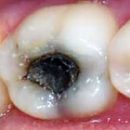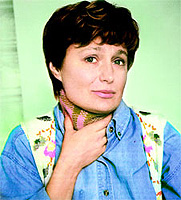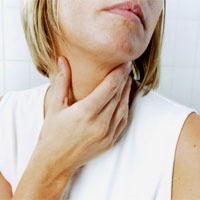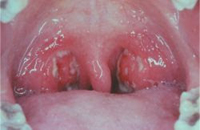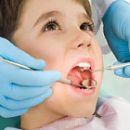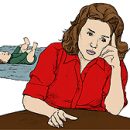The hearing is disrupted when obstacles to the passage of sound waves, which can be mechanical, and can be associated with the state of the auditory nerve. What causes a decrease in hearing? What are the symptoms?
Content
The hearing is disrupted when obstacles to the passage of sound waves, which can be mechanical, and can be associated with the state of the auditory nerve. Hearing loss can be complete and partial. Sometimes pathology can inherit. Rumor often worsens with age, as a result of the disease or under the influence of loud noise.
Types of tightness
 Three main varieties of hearing loss are distinguished: conductive, neurosensory and mixed.
Three main varieties of hearing loss are distinguished: conductive, neurosensory and mixed.
- In case of conductive hearing loss, some obstacle (for example, a sulfur tube in the outer hearing aisle) violates the functions of the external and middle ear
- With neurosensory hearing loss damaged structure of the inner ear.
- Mixed hearing loss is characterized by the presence of elements of conductive and neurosensory hearing loss
Congenital tightness
Congenital hearing loss can be inherited as a genetic disease. In newborns, the causes of such hearing loss are damage, the effects of toxic substances and infectious disease, transferred by the mother during pregnancy. Structural or functional hearing loss is most often found in premature or low-weight children. Reducing hearing in medical language is called hearing loss.
Conductive tightness
The hearing loss caused by obstacles to the enhancement of sounds is called conductive. She arises:
Content
- At the level of the outdoor ear (sulfur traffic, malformations of the outer ear)
- At the level of the middle ear (holes and damage to the eardrum; damage to the auditory bones; reversal, disrupting the mobility of the auditory bones).
Such hearing loss is usually corrected surgically. In rare cases, it is necessary to further appoint a very simple auditory apparatus - it should simply increase the sounds.
Neurosensory touginess
Headowness associated with a disruption of transforming mechanical oscillations to electrical impulses, called neurosensory. For this type of hearing loss, not only a decrease in sound perception, but also its distortion. In this case, the pain threshold is reduced; Sounds of intensity Slightly louder to the threshold of hearingness becomes intolerable, whereas for normal hearing people, the pain threshold is about 100 dB, it makes it difficult to perceive speech against the background of noise.
The causes of neurosensory tightness are:
- neuritis (lisha, epidemic parotitis and t. D.);
- increase in the pressure of the fluids of the inner ear (the disease of the Meniere);
- age reduction of hearing (presbyacuise);
- Pathology of auditory nerve.
Sensorsheral hearing loss can not be heal surgically. Electronic circuits of assignable hearing aids must be more complicated to adjust the individual characteristics of the hearing of a particular patient characteristic of this type of hearing loss.
Mixed hearing loss
Mixed hearing loss is a combination of two above-mentioned types of hearing impairment, that is, a combination of conductive hearing loss with the defeat of the inner ear. The main reasons for this type of hearing impairment are:
Content
- Snail infection in chronic ear inflammation;
- The layering of age factors on non-eatelated otosclerosis.
Such patients should be prescribed the same hearing aids as at neurosensory hearing loss.
What are the symptoms of the disease
Although congenital hearing loss is not always immediately obvious at birth, a bad response to sound is usually found on the 2-3rd day of the child's life. As the child grows, the touginess affects the development of speech.
For conductive hearing loss, a reduced sensitivity in the perception of sounds is characterized, but changes in their disclosure occurs. It is enough to strengthen the volume - and the patient with such a form of hearing thoroughness will hear normally. Usually, a person with conductive hearing loss speaks by a quiet voice and has a normal ability to distinguish sounds, but hears worse when he chews.
A man suffering from neurosensory hearing loss is poorly distinguished by sounds, does not respond to noise, the sounds of high frequency hears worse. He complains that those surrounding say inhabitant or shout, he is concerned about the ringing in the ears.

